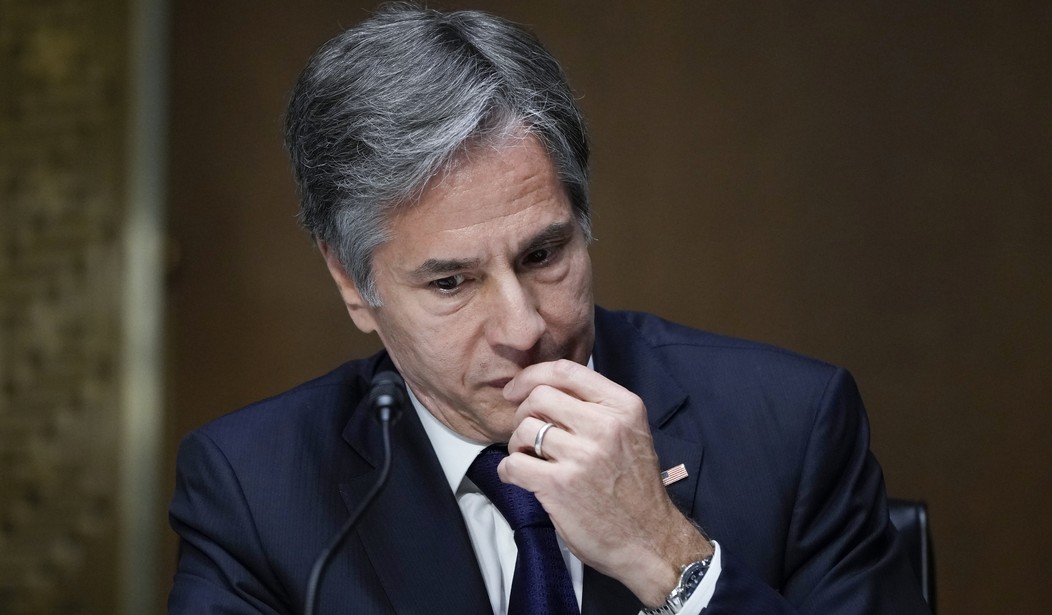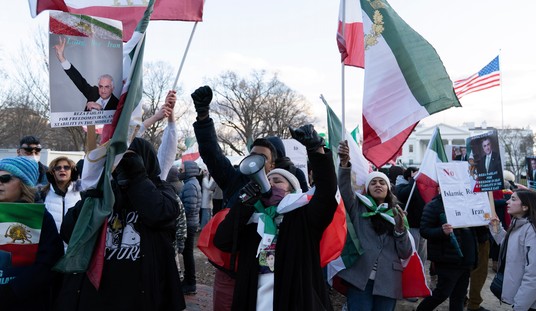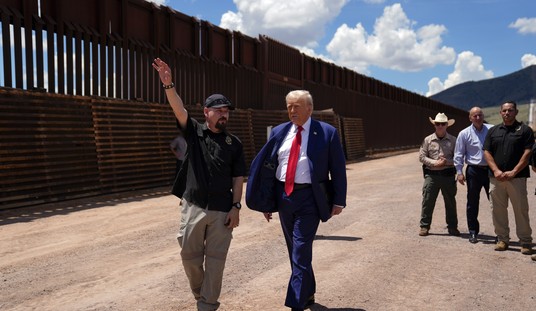Secretary of State Anthony Blinken sought to clarify ongoing U.S. efforts regarding the war in Ukraine Sunday, in appearances on NBC’s “Meet the Press” and CBS’s “Face the Nation with Margaret Brennan.”
The United States is now weaving a strategy that squeezes Russia economically to the point that sanctions cause an internal breakdown in the Russian Federation that politically forces President Vladimir Putin to abandon his aims of conquest. This risky strategy, where many fear the worst is yet to come, very much depends on keeping the Ukrainian resistance to Russia’s invasion viable until that moment arrives.
On the other side of the coin, Mr. Putin knows this all too well. He can see Ukrainian defenses stiffening since the first day of the invasion, and is coming face to face with the reality that his numerically superior force structure has capability warts, despite all the planning and drilling he has put them through to prepare to take Ukraine back into the sphere of influence of Mother Russia. Modern weapons and motivated defenders are quickly reducing Russian tactics to the age-old technique of siegecraft, using artillery to destroy infrastructure and degrade the morale of the target population.
This isn’t how the Russian general staff thought it was going to go. Enough reports of bewildered Russian soldiers have surfaced on the internet to reveal that these troops thought it was going to be a drive in, with flowers in their barrels, being welcomed by locals grateful to be saved from a latter-day Nazi government. It’s the same, naïve mistake the Leonid Brezhnev made in Afghanistan in the 1980s, an outcome that resulted in the same face losing withdrawal for the USSR that the U.S. experienced in Afghanistan last August.
Analysts I’ve discussed Russian military activity patterns with note that, until this weekend, their use of force has been remarkably constrained and surgical. They’ve made little attempt to engage the Ukrainian military in a full-force, armored mobile front battle, even though they clearly have the mass and firepower to do so. As of today, they are playing cat and mouse games with the mayors of the cities they’ve surrounded, engaging in combinations of harassing bombardments and offers of refugee corridors. It’s not hard to see that they have orders to absorb some casualties, while bearing in mind that, when the war ends, their country will have to rebuild everything they blow up. Forget about the so-called Paper Tiger narrative. The numbers just don’t add up this way. This is a lion toying with its prey, because the leader of the pride has told it not to eat yet.
This of course begs the question, “What does Vladimir Putin really want?” Does he, as hawks suggest, want to subjugate all of Ukraine as a prelude to continuing westward to conquer Europe? Does he want to split Ukraine into a part he fully controls in the east for ethnic Russians, and a part in the west where he achieves the neutral buffer zone Ukraine between himself and NATO that he’s been clamoring for since he took charge of the Russian Federation after Boris Yeltsin?
The problem with finding the answer to those questions is that the U.S. and Russia aren’t talking to each other, at least not openly. For now, the U.S. and its allies are focused on bringing a reluctant Putin to the diplomatic table, and Mr. Putin is focused on consolidating his position; so when he does eventually sit down at least fifteen feet away from everyone else’s chairs, he’s standing in the tactical position he wants to be in on Ukrainian soil.
And so, we dive into Secretary Blinken’s carefully arranged talking points.
On Fighter Aircraft Heading to Ukraine
SEC. ANTONY BLINKEN: Well, first let me say this. President Zelenskyy has been a remarkable leader. He’s been the embodiment of the Ukrainian people and everything they’re doing to resist this, this Russian aggression. And President Biden’s in regular contact with him as he was just yesterday, on this question of planes. Yes, we’re talking very actively about this, looking at what we could do to backfill Poland, if it chooses to send the MiGs and the SU planes that it has to Ukraine, how we can help by backfilling what they’re giving to the Ukrainians. So that’s in very active discussion as we speak.
CHUCK TODD: You said if, if Poland. That’s a Polish decision not a NATO decision?
SEC. ANTONY BLINKEN: It’s a sovereign decision by Poland, if they choose to do it. We want to make sure that we can help them again, backfill, what they’re giving so that they don’t have any loss in their own ability to provide for security –they’re giving to the Ukrainians. So that’s in very active discussion as we speak.
The US clarified its position on the transfer of fighter aircraft to Ukraine. America pulled the plug on transferring NATO fighters to the Ukrainian Air Force last week, upsetting a fair few people who criticized the U.S. for yet another round of fecklessness. Blinken noted that the U.S. does not object to supplying Ukraine with military equipment, including transferring jets, but the transfer being a coordinated NATO move, which the alliance supports, was problematic because it exposed NATO to the accusation of directly entering in the war with Russia. The U.S. is not of a mind to escalate Ukraine into a direct war with Russia because of where such a path might lead.
So, the revised U.S. plan is to continue the process of individual nations supplying Ukraine with weapons, thus keeping NATO out of the picture. Blinken stated that the new plan is for countries like Poland to make an individual decision to give their MiG’s and Sukhoi’s to Ukraine. Separately, the U.S. will backfill the Poles’ fighter aircraft inventory to make sure their air force remains capable of meeting their NATO defense commitments. It’s a bit of a diplomatic sleight of hand, but I can see the logic to it and support this nuance.
The U.S. proposal meets the objective of keeping Ukrainian resistance viable by helping to deny Russian air superiority over Ukraine. It pushes back the sticky issue of no-fly zones over Ukraine, which Secretary Blinken emphasized was a non-starter despite Ukrainian President Volodymyr Zelenskyy’s pleas because it is too provocative and is 100 percent sure to create exactly the kind of incident that could ignite World War III.
SEC. ANTONY BLINKEN: First, again, my admiration for President Zelenskyy has no bounds and if I were in his shoes, I’d be asking and looking for everything possible from everyone in every place around the world. And as I said, what we’ve already done is extraordinary. And just to remind people, over the past year alone, from the United States alone, more than a billion dollars in security assistance, lethal defensive weapons that are being put to very effective service by Ukrainians now in defense of their country, and other measures that we’re looking at going forward.
Just in the last week alone, Chuck, we have delivered more than $200 billion worth of security assistance into the hands of Ukrainians. So all of that is ongoing. All of that’s continuing. The president’s been very clear about one thing all along as well, which is we’re not going to put the United States in direct conflict with Russia. Not have you know, American planes flying against Russian planes or our soldiers on the ground in Ukraine. Because for everything we’re doing for Ukraine, the President also has a responsibility to not get us into a direct conflict, a direct war with Russia, a nuclear power, and risk a war that expands even beyond Ukraine to Europe. That’s clearly not our interest.
What we’re trying to do is end this war in Ukraine, not start a larger one. And by the way, keep in mind what — again, keep in mind what a no fly zone. Just so people understand too, what a no fly zone means. It means that if you declare a space, no fly, and Russian plane flies through it, it means we have to shoot it down.
Still, I found this move particularly interesting, because a US “back fill” would surely involve introducing American fighter aircraft plucked from USAF inventory into frontline NATO air forces that will face Russia in the future. This may start with 4th generation U.S. fighters such as retiring F-16’s and F-15’s, but will surely evolve, to the benefit of the US defense industry, to evolved 4th generation aircraft such as the latest F-15EX and F-16V series and even 5th generation fighters like the F-35’s. That means in the future, NATO’s force structure will have force multiplier advantages over the Russian sphere of influence that will be impossible to counter symmetrically, especially if sanctions are in place.
But, there’s also a cautionary tale here. This “back fill” opportunity may feel good from a table of equipment point of view, certainly so from the promise it holds for a lucrative round of foreign military sales export permit; but, the US should be wary of the fact that Putin has a streak of responding to structural weaknesses by exploring weapons systems that have desperate threat shades of V-1 and V-2’s in them, such as hypersonic weapons, long range torpedoes, and low yield nuclear warheads.
On Banning Oil Imports from Russia
SEC. ANTONY BLINKEN: I spoke to the president and the cabinet — the leading members of the cabinet about this just yesterday from Europe, and we are now in very active discussions with our European partners about banning the – the import of Russian oil to our countries, while of course at the same time maintaining a steady global supply of oil. The actions we’ve taken to date have already had a devastating impact on the Russian economy. We see the ruble in freefall. We see the economy heading into a deep recession. We — we’ve already had a major impact, but we’re looking — again, as we speak – in coordination with allies and partners at this prospect of banning oil imports.
Secretary Blinken spent some time noting that there is an active discussion among the US and its European allies about banning oil imports from Russia. The problem facing the West is that it’s just not prepared to shut off the tap suddenly. There are no alternate supplies. Among the allies, only the United States can directly replace Russia as the oil and gas supplier to Europe; but the US infrastructure is badly out of position to do so quickly, due to our past decisions not to invest in our oil infrastructure. This has turned out to be a political decision that has bitten our ability to pressure Russia quite badly. And it’s one that the US needs to make the strategic decision to remedy and never let ourselves be so vulnerable to again. Until our extraction, transportation and refining infrastructure is again able to meet the needs of our sphere’s oil supply sans the Russian contribution, this will remain difficult.
So, the bottom line is this one’s a muddle-struggle where President Biden has a lot of tough choices to make that will probably cost him political points with the climate change lobby to do what’s best for the national interest. I’m going to keep watching to see how gas prices change in Russia and the West on YouTube.
No End in Sight
SEC. ANTONY BLINKEN: You know, how this ends is – is an important question. And I wish that we could see signs that President Putin was willing to engage diplomatically to bring this aggression to a close. Right now, we’re not seeing that. He was on the phone with President Putin, with President Macron of France a couple of days ago, and by all accounts, according to the French, he’s digging in and doubling down. And I think we have to be ready that this could go on for some while. The sheer force that Russia can bring to bear, the manpower, the expanse of its military has the potential to keep grinding down these incredibly brave and resilient Ukrainians.
But, here’s the thing: winning a battle is not winning a war. Taking a city is not taking the hearts and minds of the Ukrainians, and what we’ve learned over the past couple of weeks is that they will fight to the end for their country, and if it takes a week, if it takes a month, if it takes a year. And he has no plan, Putin, for how this actually ends on his terms. He can’t impose his will and Russia’s will on 45 million Ukrainians. They’ve clearly demonstrated that. But it may take some considerable time to play out. We want it to end as quickly as possible with Ukraine having its independence, its territorial integrity, its sovereignty. But I think we need to be prepared for this going on for some time.
The bottom line is that, as I noted earlier in this article, no one is talking directly at this time. If there are any back-channel negotiations going on, they are not leaking out. Not even in the sieve of secrecy that is the Washington Beltway. This is going to be another slog of a week for Ukrainians, as the price to them will surely be an increasingly difficult mode of survival as the power stations, communications towers, fuel supplies, and food supply lines continue to be shelled into rubble by a Russian army settling into besieging Ukraine into submission.














Join the conversation as a VIP Member